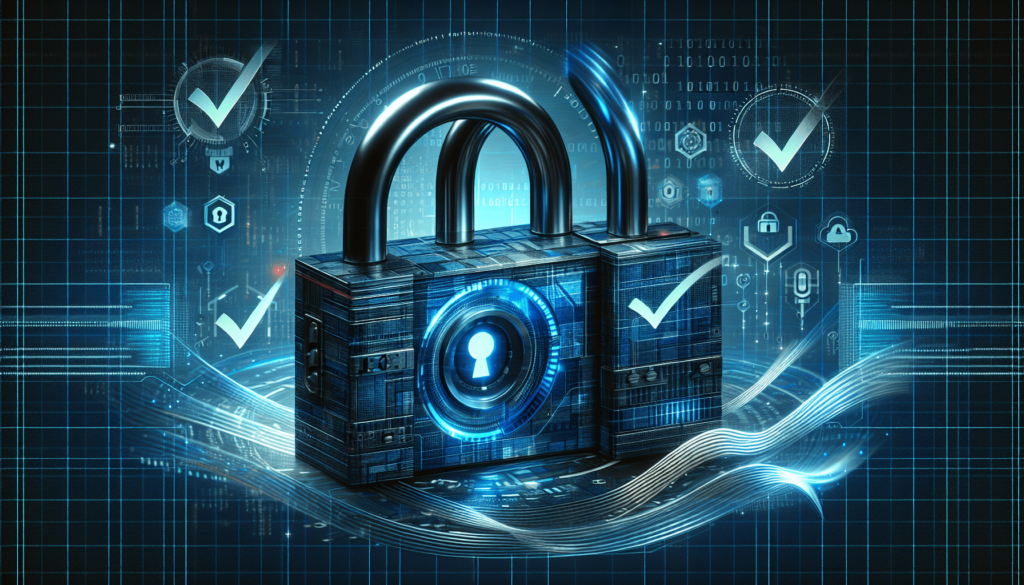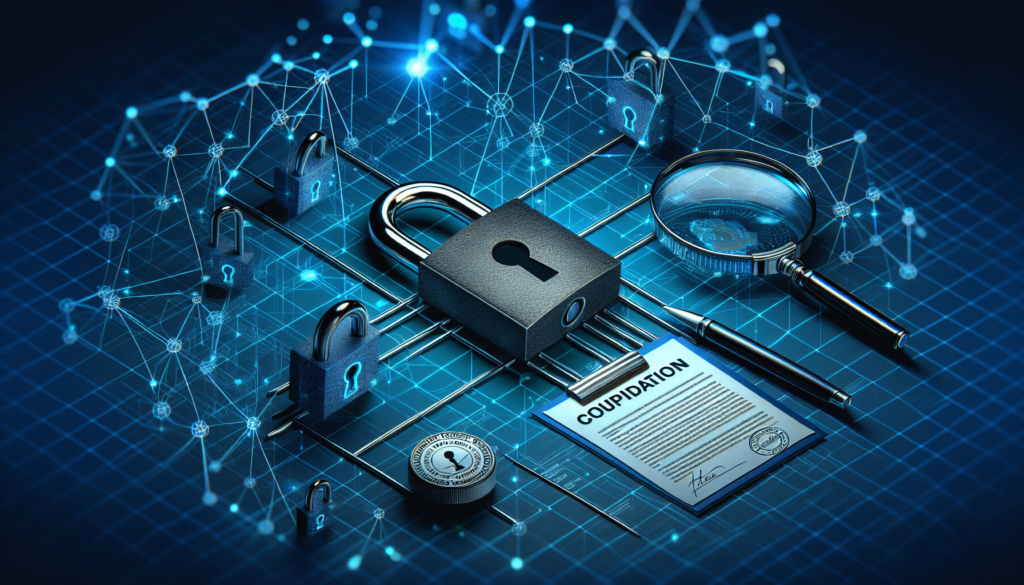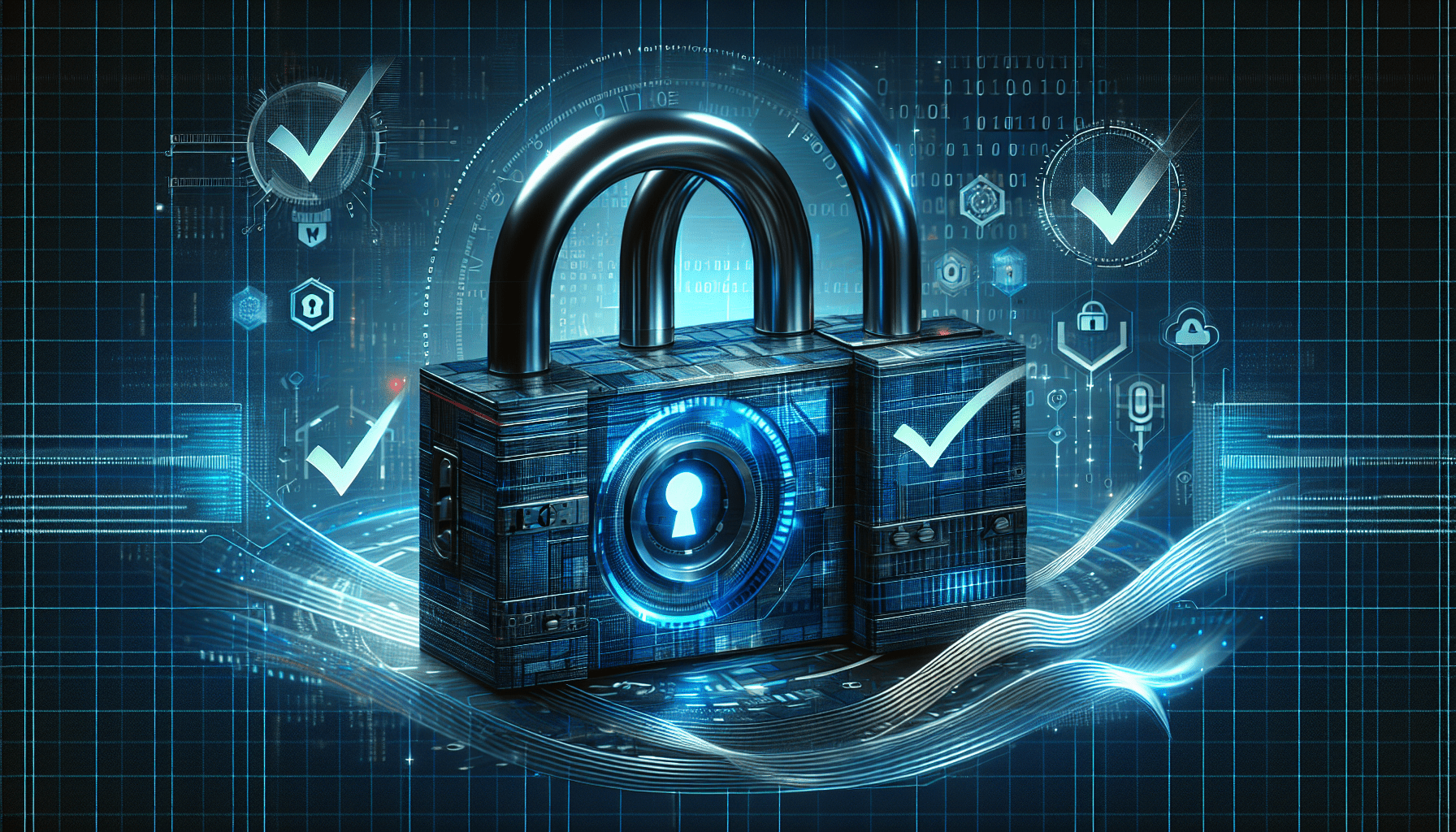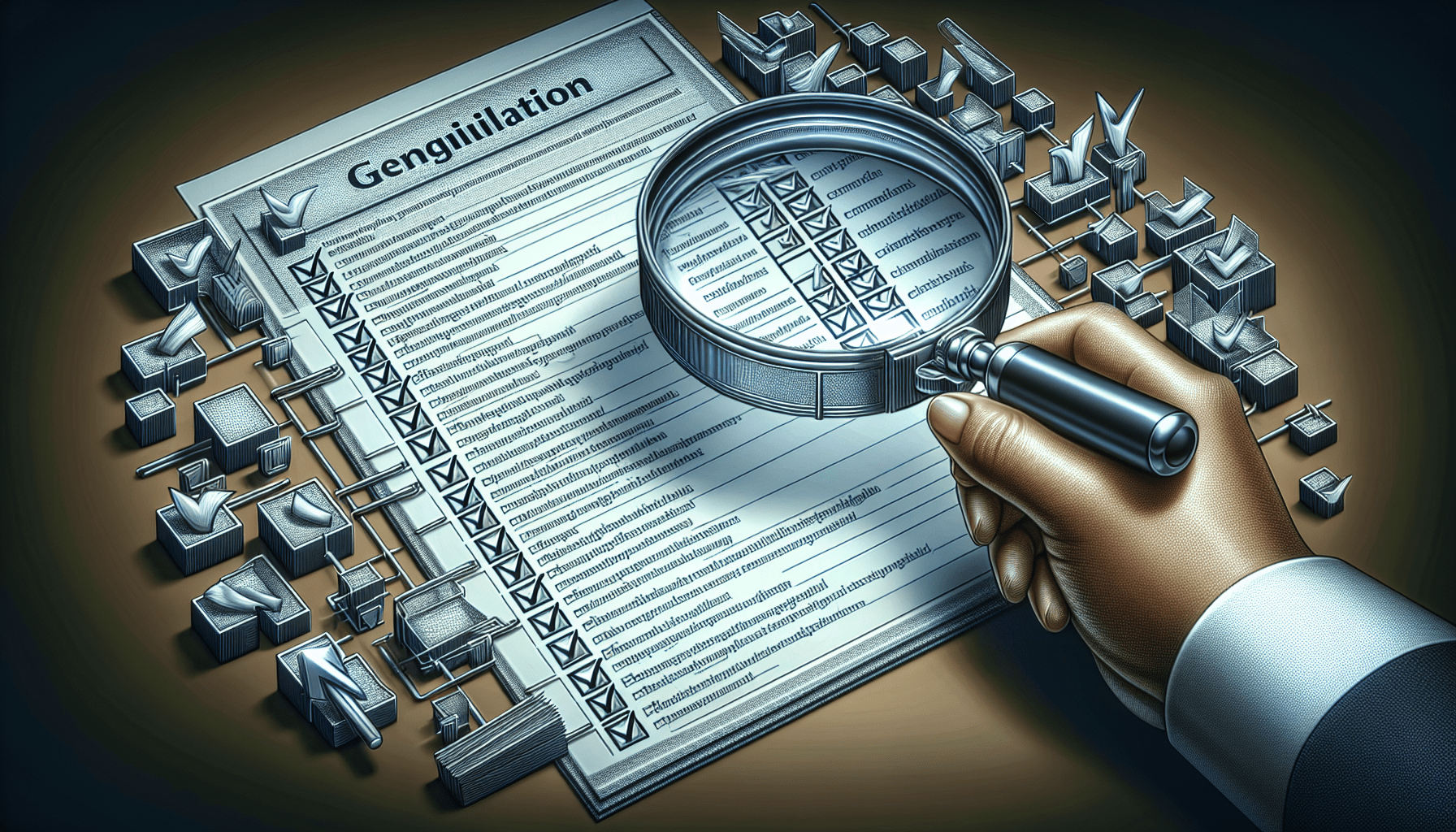In today’s rapidly evolving digital landscape, the need for robust cyber security measures has become paramount. As organizations continue to adopt advanced technologies and expand their online presence, the risks associated with cyber threats and data breaches have significantly increased. To mitigate these risks, compliance audits play a crucial role in ensuring that organizations adhere to established security protocols and regulatory requirements. By systematically examining and evaluating an organization’s cyber security practices, compliance audits help identify vulnerabilities, assess the effectiveness of existing controls, and ensure compliance with industry standards. This article explores the importance of compliance audits in cyber security, highlighting their role in safeguarding sensitive information and maintaining the integrity of digital infrastructures.

1. Introduction
Definition of compliance audits in cyber security
Compliance audits in cyber security refer to the process of evaluating an organization’s adherence to established guidelines, regulations, and standards to ensure the confidentiality, integrity, and availability of its information assets. These audits are designed to identify vulnerabilities, assess risks, and measure the effectiveness of security controls. By conducting compliance audits, organizations can mitigate the potential impact of security breaches, protect sensitive data, and maintain trust with customers and stakeholders.
2. Understanding Cyber Security Compliance
Importance of compliance in cyber security
Compliance is of utmost importance in the field of cyber security. With the increasing frequency and sophistication of cyber attacks, organizations need to establish and maintain robust security measures to protect their digital assets. Compliance ensures that organizations meet regulatory requirements, industry standards, and best practices, thereby minimizing the risk of data breaches, financial losses, and reputational damage. Compliance acts as a proactive approach to cyber security, providing a framework for organizations to enforce security controls and safeguard their critical information.
Role of compliance audits in cyber security
Compliance audits play a crucial role in validating an organization’s cyber security measures and assessing their effectiveness. These audits provide an independent and objective evaluation of an organization’s adherence to regulatory requirements and industry standards. By conducting compliance audits, organizations can identify gaps in their security controls and address them promptly. These audits also help in demonstrating regulatory compliance to auditors, customers, partners, and other stakeholders, strengthening the overall cyber security posture of the organization.
3. Benefits of Compliance Audits in Cyber Security
Identifying vulnerabilities and risks
One of the primary benefits of compliance audits in cyber security is the identification of vulnerabilities and risks within an organization’s information systems. Through thorough evaluation and testing, compliance audits can uncover weaknesses in security controls, misconfigurations, or outdated software and hardware. By addressing these vulnerabilities, organizations can fortify their cyber defenses and reduce the chances of successful attacks.
Ensuring adherence to regulations and standards
Compliance audits ensure organizations’ adherence to relevant regulations, such as industry-specific laws and international data protection standards. These audits assess whether an organization has implemented the necessary safeguards to protect sensitive data and maintain privacy. By ensuring compliance with regulations and standards, organizations can avoid legal consequences, financial penalties, and damage to their reputation.
Detecting and preventing security breaches
Compliance audits help organizations in detecting and preventing security breaches before they cause significant damage. By analyzing security controls, monitoring access logs, and assessing user activity, auditors can identify any suspicious or unauthorized behavior. These audits enable organizations to implement proactive measures, such as intrusion detection systems, firewalls, and encryption protocols, to protect against cyber threats.
Measuring effectiveness of security controls
Effective security controls are vital for organizations, and compliance audits assess the efficacy of these controls. By evaluating whether the implemented security measures align with industry practices and regulatory requirements, compliance audits provide organizations with insights into the effectiveness of their cyber security programs. This evaluation enables organizations to make informed decisions regarding necessary improvements and investments in their security infrastructure.
4. Frameworks and Standards for Compliance Audits
ISO 27001
ISO 27001 is an international standard that provides a systematic and comprehensive approach to managing information security risks. It outlines the requirements for establishing, implementing, maintaining, and continually improving an Information Security Management System (ISMS). Compliance audits based on ISO 27001 ensure organizations adhere to best practices in managing information security risks.
NIST Cybersecurity Framework
The NIST Cybersecurity Framework is a set of guidelines, standards, and best practices created by the National Institute of Standards and Technology (NIST) to help organizations manage and mitigate cyber security risks. Compliance audits based on the NIST Cybersecurity Framework assess an organization’s readiness, resilience, and ability to prevent, detect, respond to, and recover from cyber attacks.
PCI DSS
The Payment Card Industry Data Security Standard (PCI DSS) is a set of security standards designed to protect credit card information during payment processing. Compliance audits based on PCI DSS ensure that organizations handling payment card data maintain the necessary security controls to protect against breaches and ensure the confidentiality, integrity, and availability of cardholder information.
HIPAA
The Health Insurance Portability and Accountability Act (HIPAA) is a U.S. federal law that sets privacy and security standards to protect individuals’ medical records and other personal health information. Compliance audits based on HIPAA assess whether organizations in the healthcare industry comply with the required safeguards to protect patient data and maintain the privacy of their health information.
GDPR
The General Data Protection Regulation (GDPR) is a regulation enacted by the European Union (EU) to safeguard the privacy and personal data of EU citizens. Compliance audits based on GDPR ensure that organizations handling personal data of EU citizens implement the necessary measures to protect this data and comply with the regulations regarding data subject rights, data breach notifications, and lawful data processing.

5. Key Elements of a Compliance Audit in Cyber Security
Documentation and policies review
The review of documentation and policies is a fundamental element of a compliance audit in cyber security. Auditors assess the organization’s documented policies and procedures to ensure they align with applicable regulations and industry standards. This includes reviewing policies related to data protection, access controls, incident response, and employee training.
Risk assessment and management
Compliance audits involve evaluating an organization’s risk assessment and management processes. Auditors assess whether the organization has identified and assessed potential cyber security risks, implemented appropriate controls to mitigate these risks, and has a plan in place for responding to and recovering from security incidents.
Network and system vulnerability scanning
Network and system vulnerability scanning is an essential aspect of compliance audits. Auditors perform scans to identify any vulnerabilities or weaknesses in an organization’s network infrastructure and systems. These scans can help uncover potential entry points for cyber attackers and allow organizations to patch or mitigate the identified vulnerabilities.
Penetration testing
Penetration testing is another critical element of compliance audits. It involves simulating cyber attacks and attempting to exploit vulnerabilities within an organization’s systems and network infrastructure. Penetration testing helps evaluate the effectiveness of the implemented security controls and identifies any weaknesses that need to be addressed.
Incident response planning and testing
Compliance audits assess an organization’s incident response planning and testing procedures. Auditors evaluate whether the organization has developed a robust incident response plan, trained employees on their roles and responsibilities during an incident, and conducted periodic testing and exercises to validate the effectiveness of the plan.
6. Compliance Audit Process in Cyber Security
Planning and scoping the audit
The compliance audit process in cyber security begins with planning and scoping. This involves determining the audit objectives, identifying the regulatory requirements and standards applicable to the organization, and defining the scope of the audit. Planning also includes establishing the audit team, allocating resources, and developing an audit schedule.
Conducting the audit procedures
Once the planning phase is complete, auditors proceed with conducting the audit procedures. This involves gathering evidence, interviewing key personnel, reviewing documentation and policies, and performing technical assessments such as vulnerability scans and penetration tests. The audit procedures aim to assess the organization’s compliance with the identified regulations and standards.
Analyzing and evaluating findings
After completing the audit procedures, auditors analyze and evaluate the findings. This includes assessing the identified vulnerabilities, risks, and non-compliance areas. Auditors compare the organization’s practices against the regulatory requirements and industry standards, identifying any gaps or shortcomings in the implemented security controls.
Documenting and reporting results
Once the findings are analyzed and evaluated, auditors document and report the results of the compliance audit. This involves preparing an audit report that highlights the strengths, weaknesses, and recommendations for improvement. The report provides a comprehensive overview of the organization’s compliance status, identifies areas of non-compliance, and suggests remedial actions.
Implementing corrective actions
The final phase of the compliance audit process involves implementing corrective actions based on the audit findings and recommendations. The organization must address the identified vulnerabilities, improve security controls, and ensure compliance with the relevant regulations and standards. Implementing corrective actions is crucial to strengthen the overall cyber security posture and prevent future security incidents.
7. Challenges and Best Practices in Compliance Audits
Complexity of regulatory requirements
The complexity of regulatory requirements poses challenges for organizations during compliance audits. With the evolving regulatory landscape, organizations need to continuously stay updated with the latest regulations and ensure compliance with multiple frameworks and standards. To overcome this challenge, organizations should establish a dedicated compliance team, invest in training and education, and leverage automated tools to streamline the compliance process.
Sustaining compliance over time
Compliance is an ongoing process, and sustaining compliance over time can be challenging for organizations. Changes in technology, business processes, and regulatory requirements require organizations to continuously monitor their compliance status and make necessary adjustments. Implementing a robust compliance management system, conducting regular self-assessments, and engaging in periodic audits help organizations sustain compliance and adapt to evolving threats and regulations.
Involvement of third-party auditors
Many organizations engage third-party auditors to conduct compliance audits. However, managing the relationship with auditors and ensuring their independence and objectivity can be a challenge. Organizations should establish clear expectations, communicate effectively with auditors, and verify their qualifications and certifications. By fostering a collaborative and transparent partnership with auditors, organizations can enhance the effectiveness of compliance audits.
Continuous monitoring and improvement
Compliance audits provide a snapshot of an organization’s compliance status at a specific point in time. However, cyber security threats constantly evolve, and organizations need to continuously monitor and improve their security controls. Implementing continuous monitoring tools, conducting periodic risk assessments, and staying updated with emerging threats and vulnerabilities help organizations proactively address compliance gaps and enhance their cyber security posture.
Engagement of senior management
The engagement and commitment of senior management are crucial for the success of compliance audits. Senior management should provide the necessary resources, support, and leadership to establish a culture of compliance within the organization. By prioritizing cyber security, allocating adequate budgets, and participating in regular compliance assessments, senior management sets the tone for the entire organization and ensures the effectiveness of compliance audits.
8. Role of Automation in Compliance Audits
Automating compliance checks
Automation plays a significant role in streamlining compliance audits. By automating compliance checks, organizations can reduce the manual effort and time required to assess compliance. Automated tools can continuously monitor security controls, generate compliance reports, and alert organizations about any potential non-compliance areas. Automating compliance checks improves efficiency and enables organizations to conduct audits more frequently and comprehensively.
Utilizing artificial intelligence and machine learning
Artificial Intelligence (AI) and Machine Learning (ML) technologies can enhance the effectiveness of compliance audits. AI and ML algorithms can analyze large volumes of data, identify patterns, and detect anomalies or suspicious activities. By leveraging these technologies, organizations can uncover hidden risks, predict potential vulnerabilities, and enhance their ability to prevent and mitigate cyber attacks.
Orchestration of compliance workflows
Orchestrating compliance workflows helps organizations streamline the audit process and ensure consistency in compliance assessments. By defining standardized procedures, automating task assignments, and establishing clear communication channels, organizations can facilitate collaboration between auditors, IT teams, and other stakeholders. Compliance workflow orchestration ensures that compliance audits are conducted efficiently and effectively.
9. Case Studies: Successful Compliance Audits
Company A: Achieving compliance and enhancing security posture
Company A, a financial institution, successfully underwent a compliance audit based on PCI DSS and ISO 27001. Through the audit process, Company A identified vulnerabilities in its payment processing systems, leading to prompt remediation. The compliance audit also highlighted areas for improvement in the organization’s security controls and incident response procedures. By addressing the audit findings and implementing recommended enhancements, Company A not only achieved compliance but also enhanced its overall security posture.
Company B: Overcoming challenges and maintaining compliance
Company B, a healthcare provider, faced challenges in maintaining compliance with HIPAA regulations due to the dynamic nature of the healthcare industry. Through regular compliance audits, Company B identified areas of non-compliance, such as outdated software and insufficient access controls. The organization implemented a robust compliance management system, conducted employee training, and leveraged automated tools to sustain compliance over time. Company B’s proactive approach to compliance audits enabled them to overcome challenges and maintain a secure environment for patient data.
Company C: Leveraging compliance audits for business growth
Company C, a technology start-up, recognized the business value of compliance audits beyond meeting regulatory requirements. By undergoing a compliance audit based on GDPR and ISO 27001, Company C demonstrated its commitment to data privacy and security to prospective customers. The audit provided a competitive advantage, instilling trust and confidence in clients. Company C leveraged the audit results to enhance its marketing strategy and leverage compliance as a growth catalyst.
10. Conclusion
The ongoing importance of compliance audits in cyber security
In today’s digital landscape, the importance of compliance audits in cyber security cannot be overstated. Compliance audits play a pivotal role in ensuring organizations’ adherence to regulations, identifying vulnerabilities, and mitigating risks. These audits provide organizations with valuable insights into their cyber security posture and enable them to make informed decisions to protect their sensitive information. By embracing the challenges and leveraging best practices, organizations can navigate the ever-evolving cyber threat landscape and enhance their security through effective compliance audits.



